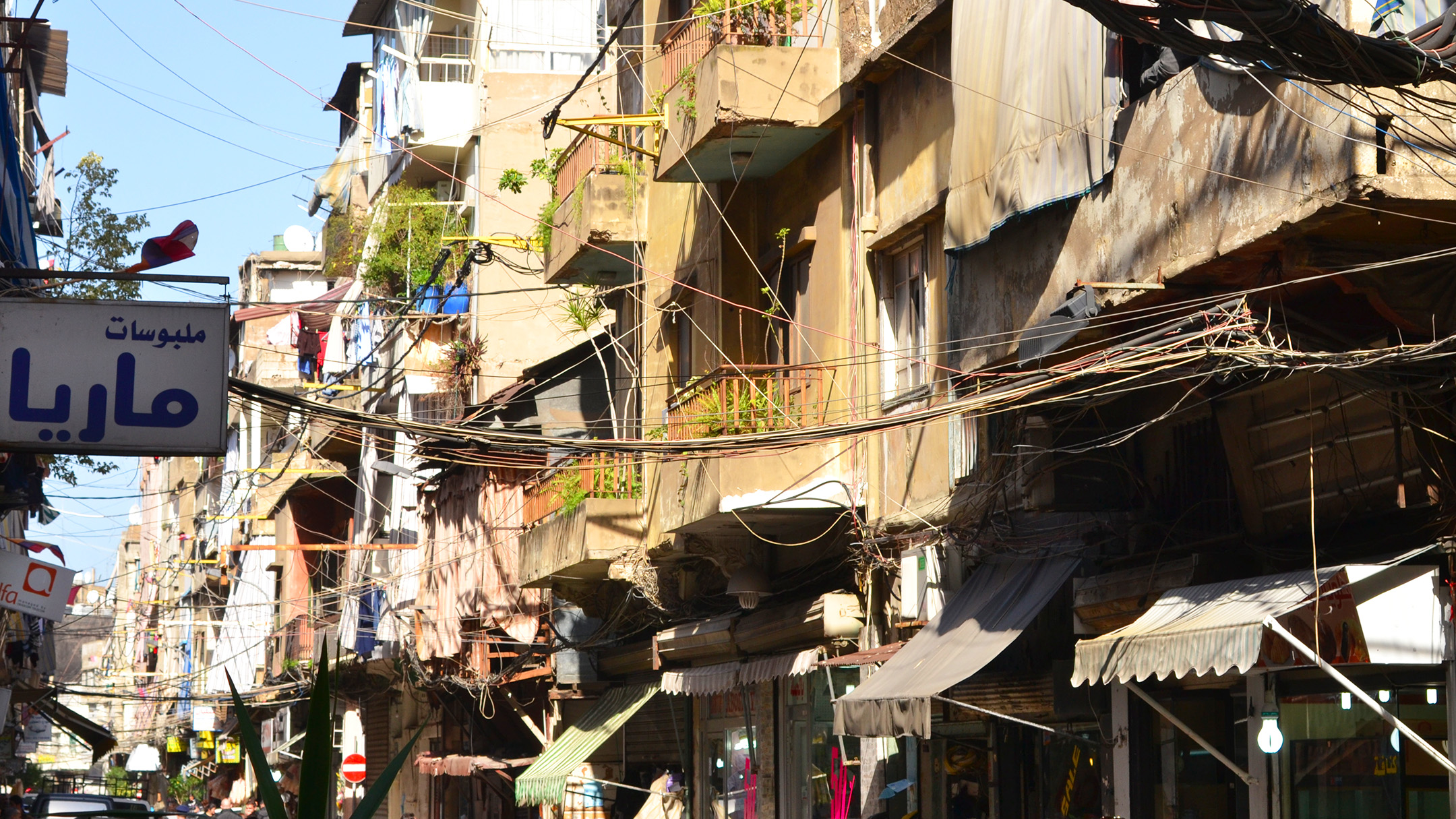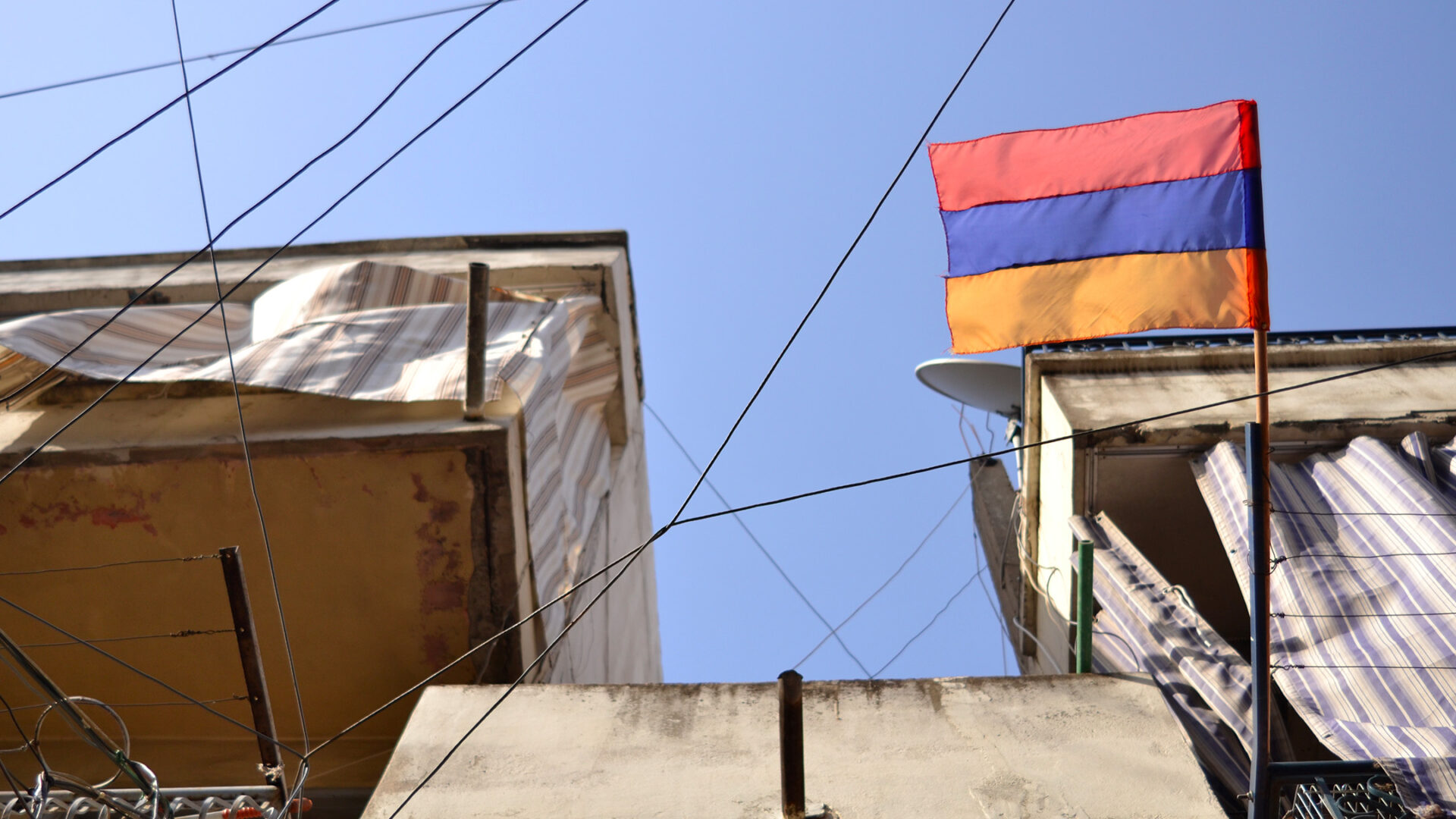Genesis
Prior to the 20th century, the amount of Armenians residing in Lebanon was very small. Fleeing the massacres in Cilicia after the 1915 genocide, Armenians were rescued by French boats and relocated to Beirut.
Bourj Hammoud used to be a swampy area. Between 1922 and up to 1930 it had essentially been full of mulberry trees for the lucrative silk work farming. Later on, it became Beirut’s agricultural area, with fresh produce, and citrus orchards as well as sugar cane plantations and flowers closer to the Beirut-Tripoli highway. Agricultural produce was sold in Central Beirut in the market halls situated behind the famous Cinema Rivoli, which once stood towards the sea-end of Martyrs’ Square and was razed after the war.
Having initially settled into camps around Karantina and Mar Mikhael, Armenians gradually started to move to Bourj Hammoud. Frequent fires in the camps, pressure from the Lebanese and French authorities to do away with the camps, challenging living circumstances, disease and bad elements lead to the birth and rapid growth of an Armenian neighbourhood.

From inception, the area was characterised by high density. At present, it has an estimated population of 150,000, spread over a mere 3 square kilometres. More diverse than other parts of the Lebanese capital, Bourj Hammoud boasts a mix of populations, not merely Armenian, but also Kurd, Shiites, Ethiopians and Syrians as well as other foreign nationals working in Lebanon residing here. Many Ethiopians who don’t live with their employers and other migrant or domestic workers live in Dora, one of the neighbourhoods that make up Bourj Hammoud.
The other eight neighbourhoods in the municipality are: Chatiq al Bahri (coastal area), Marash, Haret Sader, Nor Adana, Mar Doumith, Nor Sis, Nabaa and Ghilane. Marash, Nor Sis and Nor Adana are named after Armenian cities (Yerevan flyover), rivers (Arax) and towns in Cilicia (Marash).
There are Armenian and Maronite churches as well as Shiite Mosques in the area, reflecting a diverse demographic fabric. Armenian refugees would build schools at the same time as they would build churches. As a result, there are 35 schools (3 of them public) in Bourj Hammoud.
Besides two theatres, the Armenian municipality boasts a cultural centre run by Hamazkayin Armenian Educational and Cultural Association with a music conservatory, a bookstore and publishing house where Aztag, the Armenian daily gets printed.
Bourj Hammoud boasts a mix of populations, not merely Armenian, but also Kurd, Shiites, Ethiopians and Syrians as well as other foreign nationals working in Lebanon residing here.
As a result of the neutral stance that it adopted, the area was relatively peaceful during the war. The war nonetheless affected the area. It also transformed Bourj Hammoud, becoming more commercial.
Some of the businesses that were ruined in the city centre notably many of the Armenians working in the Souk el Sagha (Jewellers Souk), which was destroyed in 1982/83, relocated to Bourj Hammoud.
An important new hub emerged around Armenia Street and in Arax Street where until present times, a large number of jewellers and goldsmiths are based. There are around 150 jewellery stores and goldsmiths, many concentrated around the square in front of the Municipality in Armenia Street. These businesses generate a significant part of their turn over by exporting to the Gulf States, Japan, Europe and the US.
The decline in industrial activity and the rise of commercial businesses that occurred in the 80s resulted in a greater diversity of merchandise sold in Bourj Hammoud, along spatial lines. Food stores dominate the Marash quarter. Retail, including shoes, leather goods and clothes became a defining feature of Arax Street while jewellery came to dominate Armenia Street.
—
Where to stay? Baffa House, a L’hôte Libanais Family Member, is a few minutes walk from Bourj Hammoud.
—
Up until thirty years ago, there were a number of tanneries between the Beirut-Tripoli and the coastal road that employed many Armenians, known to be specialists in treating leather and making great shoes and other fine leather goods.
Bourj Hammoud may lack in public spaces and parks but it has pretty much everything else. And it is known for this diversity and ingenuity. Lebanese often bring broken things, anything from cars to a blender to Bourj Hammoud to be fixed and believe that if an Armenian can’t fix it, it is irreparable.

Explore the Bourj Hammoudian maze
Start an exploration of Bourj Hammoud at the Hamazkayin Lucy Tutunjian Art Gallery, which has since 2009 been showcasing Armenian artists. From there, it is a short walk to Armenia Street, hub of many jewellery shops. If you pass by Eco Juice, stop for a juice. Given Bourj Hammoud’s density and lack of signage, you should just follow your nose and ask locals for directions if you look for specific places.
In Marash Street you will find plenty of grocers but also stores with special Oriental produce, spices, soaps from Aleppo, dried fruit and nuts. Halfway down, there is a two-storey house on the right – it is the oldest in Bourj Hammoud.
Given the confined spaces and narrow streets and alleys, one would assume that the houses and workshops are small. Once inside a shoe workshop though, it quickly becomes clear that the space is like a big cave. In the antechamber of one of these shoemakers, at Lido Shoes, Vahé Mitilian opens a tinted glass cabinet filled with a range of silver-studded high heels posing next to vertiginous stilettos in leather and artificial materials.
In the workshop nearby a few men, each seated at their workstation, are accomplishing tasks necessary to make a complete shoe. Mitilian the founder’s grandson, proceeds to a room filled with leather swatches, prototypes and tools, where the latest collection is lined up. “Designing a new shoe is a long process,” according to Mitilian. His uncle Viken Mitilian chips in: “The shoe will carry the body and the body will carry the rest,” holding an 18cm stiletto in his hand.
Not far away from Lido Shoes is Ghazal Bakery, a hub of activity and very popular with locals where you can sit down to eat or grab one of their famous “lahme bajeen”, which is like a very thin pizza topped with mince meat and doused in lemon juice or the “ghebez tahini”, a round pastry, made with tahini.
Especially in Marash and Arax Streets, there are also antique and junk stores, as well as old-school music and record stores.
The best place to rummage through a truly fantastic assemblage of junk is at The Vintage Shop, by the Yerevan flyover, next to the stadium. Avedis Der Boghossian and his brother Krikor, have original vintage suitcases, pinball machine, and a barrage of old telephones and sign letters. They also reinvent the junk that they find and create unique design pieces. The big dog at the front door, although named Killer, is friendly.
Taste Armenia
The best way to end a trip through Bourj Hammoud, is to taste Armenian food. Among the most reputed and established restaurants to eat are Varouj and Onno, both family businesses.
Badguèr offers the advantage of serving good Armenian cuisine but also showcasing Armenian arts and crafts. If you’re lucky, Arpi Mangassarian whose brainchild the place is, will be around and can give you a tour of the house and insight into the neighbourhood and the artisans she has been working many years to promote.
Many locals also eat at Resto Foul, near Eco Juice, which has a simple décor but is good value for money.
—
Acknowledgements and thanks to Vicken Achkarian for having made his dissertation Le Développement de Bourj Hammoud à travers le réaménagement du Camp Sandjak (IUA sept.2007, available), which significantly infused the historical background section of this article.